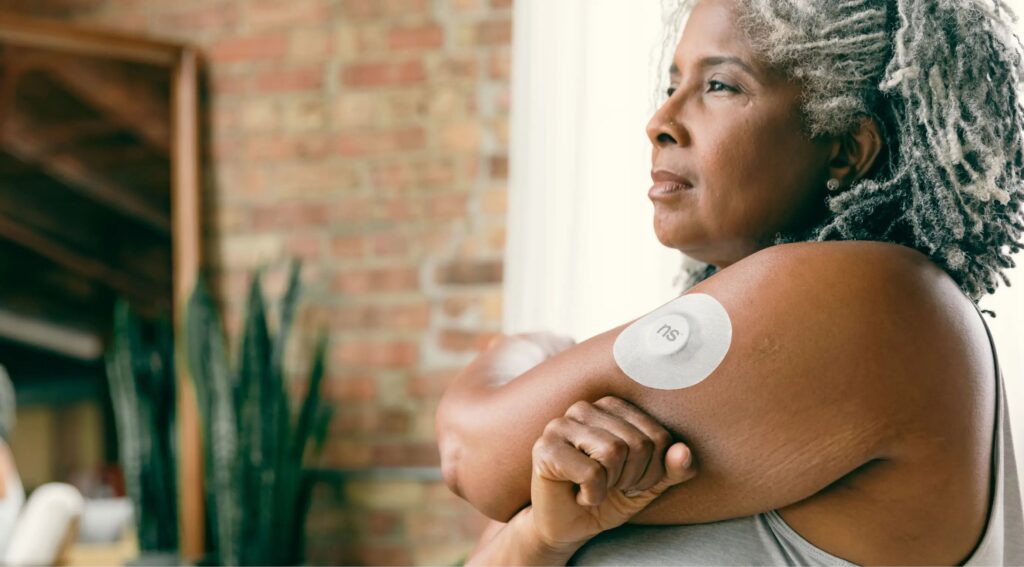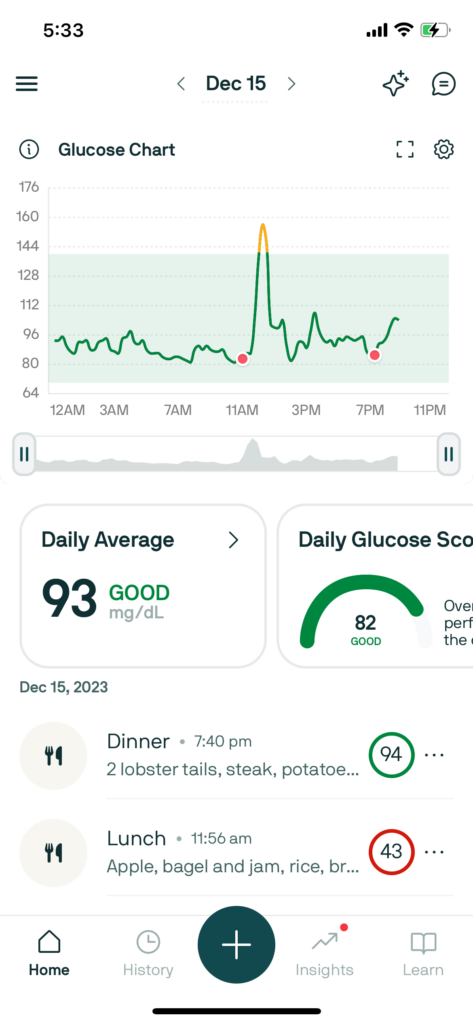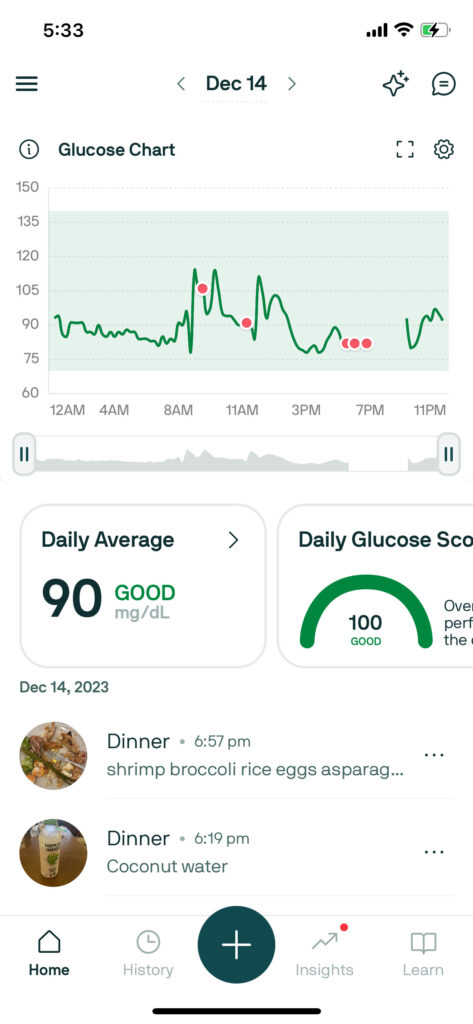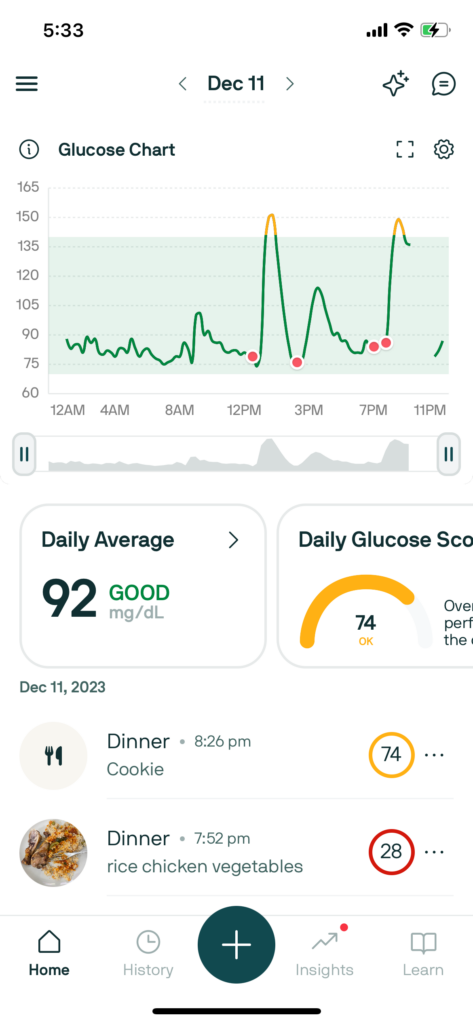
Growing up in a Nigerian household I would watch my mom cook many nigerian dishes that had tons of flavour, yet they weren’t the most nutritious meals. Often times I would watch her douse palm oil into stews, cook greens and vegetables until they meshed with the consistency of the stews and drink a coke bottle to finish off the meal. And I enjoyed all of this until I got a car and was able to access foods I typically couldn’t. I left the Nigerian cuisine world behind and focused my love on American food and sweets, including burgers, fries, cake and pop tarts. Going into my teenage years however, I experienced my first (of many) fainting episodes while attending an introductory High school seminar. It was a sensation I had never experienced before but it opened my eyes up to the world of health and the idea that my body will respond if not balanced.
After returning from a quick visit to the hospital, I decided to be more conscious of my health. I made separate food from my family and tried to make heart-healthy meals. Salmon with vegetables were my go to but I also loved baking chicken. I tried to avoid all oil as much as possible in fear of raising my cholesterol levels and I completely stopped drinking soda. I really went in full force. Where I found out that I had a huge problem, though, was with sugar. I honestly would call it a true addiction, and there’s research that shows sugar can trigger similar neural activity as some addicting drugs.1 I would finish whole cakes by myself. Even in college I would eat pop tarts for breakfast, lunch and dinner with the excuse that the nutritional label has a good amount of fortified vitamins!
As you could guess, my health did not improve even with trying to go down the vegan/vegetarian rabbit hole. I had so many fainting attacks it’s difficult to count. It’s clear my health was not as balanced as I had been aiming for and I was beginning to also worry about conditions like diabetes as I knew my sugar intake was unhealthy.
One of the several times I went to the doctors after my fainting spell I was told my glucose levels were within normal limits but my iron was too low so I started implementing red meat back into my diet which truly helped immensely. Even though I still would get lightheaded, I hadn’t fainted fully after that last visit. As I started being more cognizant of the foods I was eating and my reaction to it, I realized that, very often I would feel lightheaded and lethargic a little bit after eating. I’d also feel shaky and jittery especially when exerting myself after eating. I wanted to explore this more. I recently purchased a continuous glucose monitoring (CGM) device that’s able to track my blood sugar levels throughout the day. This helps in identifying any spikes or dips in blood sugar levels that may be causing adverse symptoms. I purchased my CGM through Nutrisense which is a CGM company geared towards those who may not be diabetic but want to track their glucose health.
Glucose
Glucose is the sugar molecule that our cells use for energy.2 When we eat, glucose rises in our blood and insulin is released to push the glucose into our cells to fuel them. Glucose is also stored in the liver for times when blood glucose reduces so there’s always a healthy level of blood glucose available. Now, if there’s too much glucose in the blood (a spike), the pancreas must push out a ton of insulin to match the spike.3 When this happens too often, the cells may become desensitized to the flooding of insulin and stop responding to it, causing glucose to remain high in the blood. This was my ultimate fear as, when I did eat sugar, I pretty much would eat it until I was sick of it and I could only imagine the spikes I was having. I actually did have some of the symptoms related to high blood sugar/diabetes like tiredness, fatigue, and I was urinating frequently.4 Through lab results though I never showed any signs of diabetes or even being close to it and thankfully today with persistent willpower I don’t crave sugar as much as I did. 95% of the time it makes me feel sick thinking of eating lots of sweets because I’ve gone through somewhat of a detox phase.
Even though I grew out of my sugar habit, carbs are broken down into sugar in the body (protein and fat can be as well in absence of sufficient carbs) and finding the right carb intake to limit the spikes and drops of my sugar levels was still a dilemma for me. That’s where the Nutrisense CGM really came in handy.
Perks of Nutrisense
When watching youtube videos and reading testimonials, even though there were cheaper options out there it seemed like Nutrisense was easier to get without insurance or a doctor’s referral. Dexcom and freestyle libre both appeared to need to be prescribed by physician.
Nutrisense also comes with an app of which you only need to scan every 8 hours. You can follow your glucose and document your meals to see what food or combination of foods possibly caused glucose to spike or level out.
The first month on Nutrisense you get a nutritionist assigned to you which helps decode some of the readings from the glucose chart. They can also analyze your lab work to determine if calibration of the CGM is necessary. For example, my CGM was calibrated +10 points by the nutritionist as my glucose and possibly Hgb A1C (3 months average percentage of blood glucose levels) were within normal range. Originally my lower glucose readings, like when I first woke up or hadn’t eaten in some hours, was in the 60 something range which is teetering on hypoglycemia (low blood sugar). Now if I really wanted to make the calibration accurate, which I’ll try to do for the remaining two weeks, I can also do a fingerstick glucometer reading and compare to the CGM results. I’ve checked my fingerstick blood glucose levels before when I felt symptoms of hypoglycemia and it was in the 60s range so it’s possible it was calibrated higher than necessary however I haven’t felt huge hypoglycemic symptoms since I’ve started so it may be accurate.
Response time is usually within a day to two days for me, often earlier but I believe the latest response from the nutritionist might’ve been two days. After the first week of getting accustomed with the nutritionist she then checks in once a week until the free month trial ends. Customer service team response was a few hours, maybe a day. In my opinion these are pretty good response rates. Nothing I asked was an emergency and they were super polite in their responses.
Shipping was a pretty speedy process as well. It may be even quicker on non-holidays but I ordered my CGM on November 24th, 2023 a.k.a Black Friday. It was shipped November 27th and arrived November 29th, just in time for the start of the month!
When you order you must wait to be approved by Nutrisense. They go over your answers from the questionnaire provided regarding what you’re using the product for and some personal details about yourself. When approved, before the item even comes to you you do have access to the app which is a great way to get accustomed to it early.
Application is painless and I’m not just saying that. There’s a step by step guide on how to set up the CGM (which second time around actually didn’t work for me but we’ll discuss that another time.) Once set up, there’s a needle in the middle of the device that’s meant to puncture your skin. The needle appears to retract so it’s no longer in your skin and the device is implanted with an adhesive keeping it on the skin. This process is literally painless. The impact of the contraption pushing in the needle seems to reduce the feeling of the needle to nothing. It’s very impressive and a must for those terrified of needles.
There’s an adhesive with the logo of the company that you can apply over the CGM. This helps prevent the premature removal or accidental destruction of the device. You can shower in it and pretty much do everything you typically do with it on.
Another cool thing is that the app allows you to take photos of your meals and it will write out what it sees in the meal and tell you the approximate nutritional facts and calories!
Cons to Nutrisense
The obvious con is the price. It’s insane how expensive this product is. Surprise! Surprise! It’s a subscription. It seems like every company coming out is subscription based. It does make sense for this company as apparently the CGM devices expire every 14 days so the package comes with two monitors for the month. If you’d like to try this CGM for one month you’re gonna pay a whopping $399 + about $16 for tax. Over $400 for one month. Now the data you’re able to obtain on the app is very informative and the free nutritionist is definitely a perk but I can’t see myself shelling out this type of money again. I’m not saying the devices aren’t worth it, especially if you tend to have a chaotic relationship with food or are just curious what’s happening in your blood when you eat, but I am content with getting one month’s content and really trying out a bunch of foods. If you are looking to analyze more months and save a little, they also have commitment package deals. 3 month commitment brings it down to $299/month (about $900+), 6 month commitment brings it down to $250/month (about $1500+), 12 month commitment brings it down to $225/month ($2700+). Again if you feel you eat such a wide variety of foods or you’d just like to track your performance over time then this may be worth it.
Another con involves placement. The device is meant to be placed on the back of the arm where you’d have the most fat (bat wing area). If you have slimmer arms the device may be slightly uncomfortable for you possibly the first few days. In the beginning of my wearing this device I would wake up with my arm experiencing a semi-sharp pain in the area. It happened enough that I reached out to my nutritionist and she suggested it may be close to a muscle. However, she confirmed my placement was correct. She basically just advised that if it kept causing pain I should contact them to get a new one. Thankfully, and miraculously, my arm somehow got use to the device and it stopped hurting shortly after.

If you don’t scan the sensor every 8 hours you will lose information. Now 8 hours is a long amount of time but I found that it was difficult to keep up with this while I was working and also sleeping. What I’ll do for next time is try to scan the sensor right before work and make sure to also try to scan during lunch. Scanning just before bed can also help but sometimes if I’m in bed for over 8 hours it’s too difficult to keep up with.



A big con occurred when I was putting on my second sensor after the first one expired on December 15th. The app alerts you when the sensor expires as it only lasts for 2 weeks. When I removed the first device and did the same steps to insert the second device, it didn’t work. When I went to push the needle in and removed the applicator, the sensor was still stuck to the applicator. Unfortunately this occurred on a Saturday and customer service is only open Monday to Friday. They were able to reach back late Sunday, asked for a photo and sent out the device the next day. Inconvenient but they dealt with the situation promptly.
2 week Verdict
My two week verdict is that I truly am enjoying the sensor. I’m not going to lie, when I was actually able to take it off I was relieved. I can’t imagine using the device for more than a month, but to have access to how my blood responds to what I eat is essential. I truly think everyone, even if you don’t have diabetes, should have access to CGMs as high blood sugar can deteriorate our bodies and we don’t have to reach a diagnosis of diabetes to start creating changes. It’s also important to gain information on what your normal is, or your trend as it’s difficult to get this information with doing constant labs or continuously pricking your finger. I’m excited to move forth with the last two weeks and maybe try to be more intentional and experimental on gauging what common food raises my blood sugar too much and what keeps me at a stable level. Because I’ve been on a confusing health journey, this item has definitely enlightened me on some things. I actually found that white rice doesn’t elevate my glucose levels as much as brown rice even when combined with protein. My nutritionist recommended eating the protein first and then the starch which I plan to implement. In all, gaining new information on how our body works is always an exciting adventure. And though we may not be able to learn everything about the body, it shouldn’t stop us from trying!





You must be logged in to post a comment.